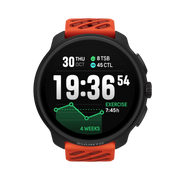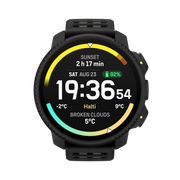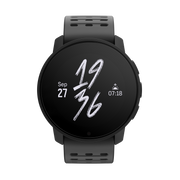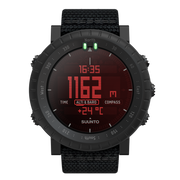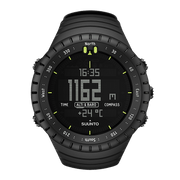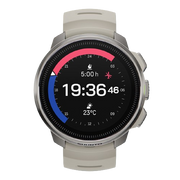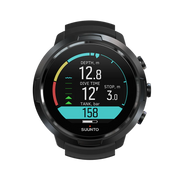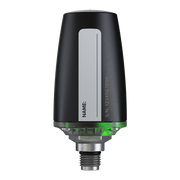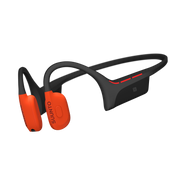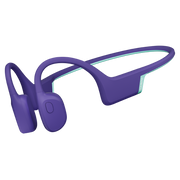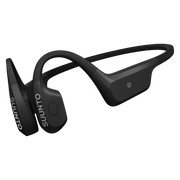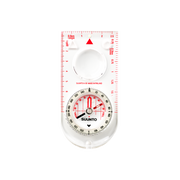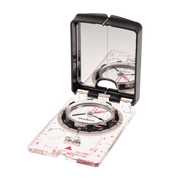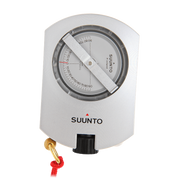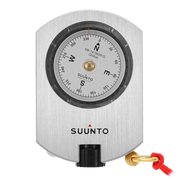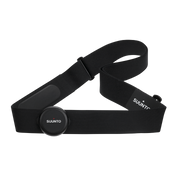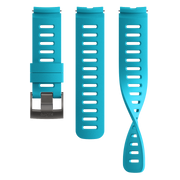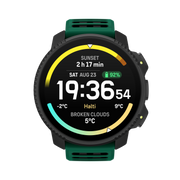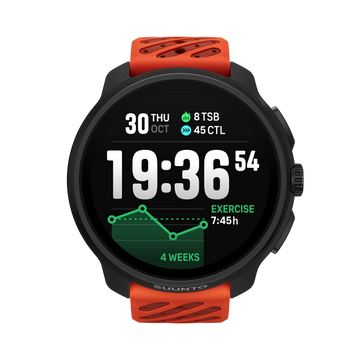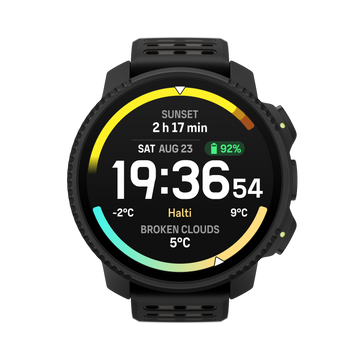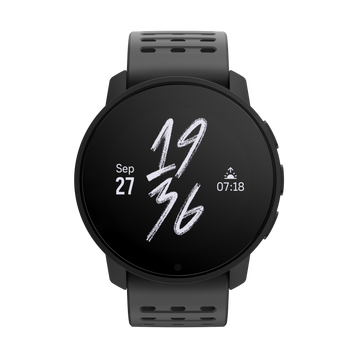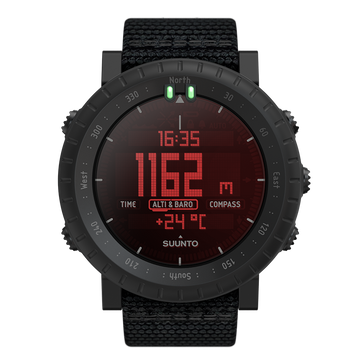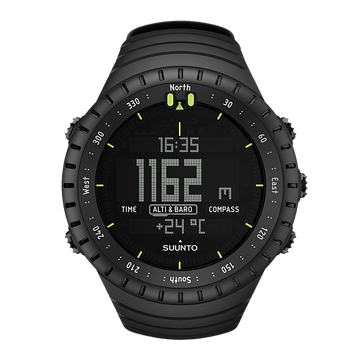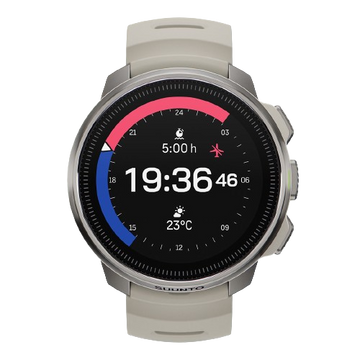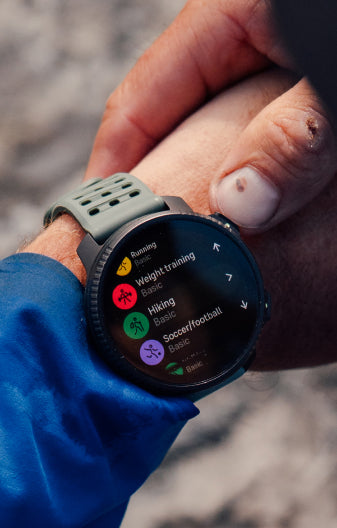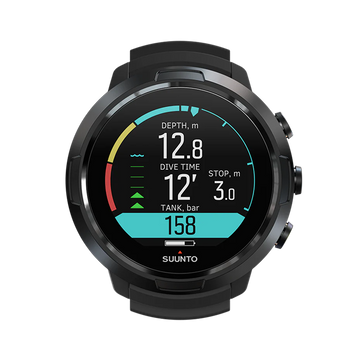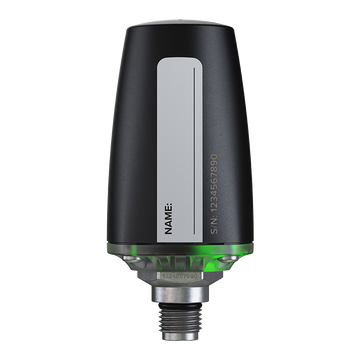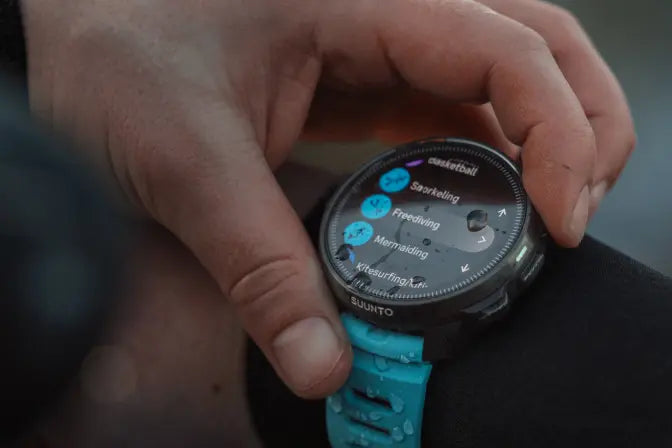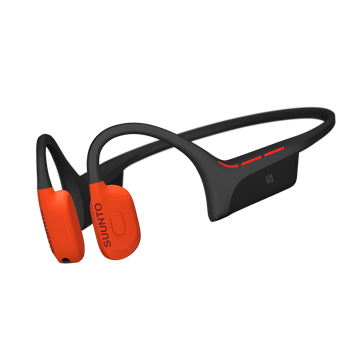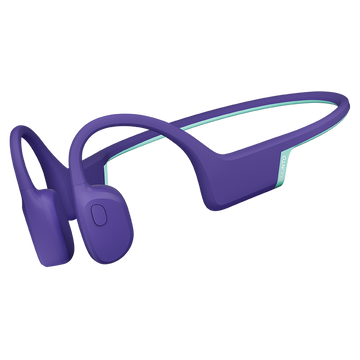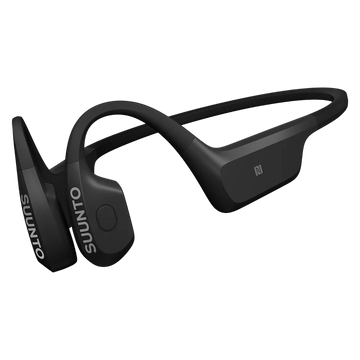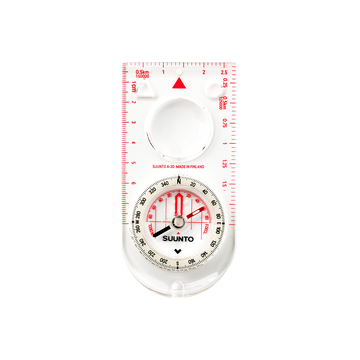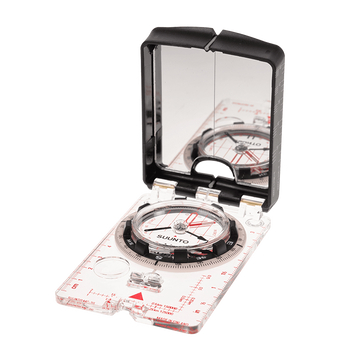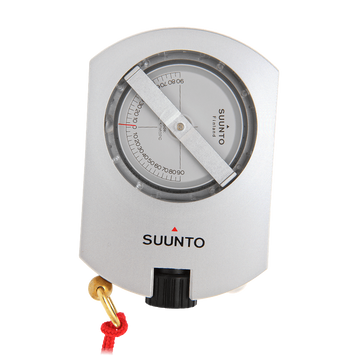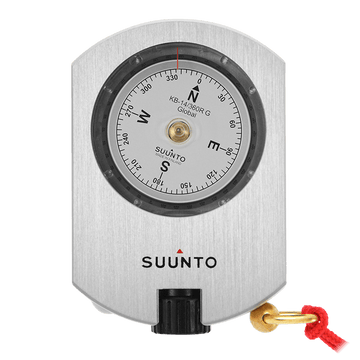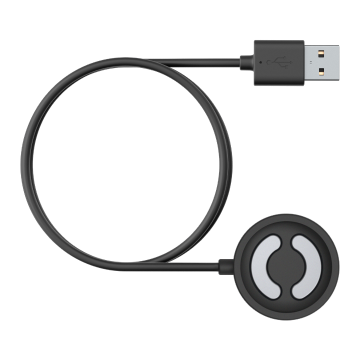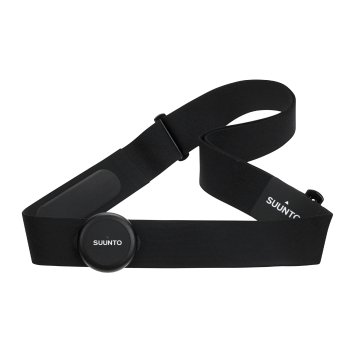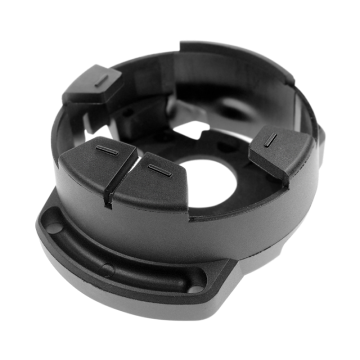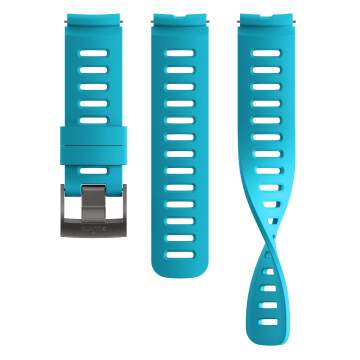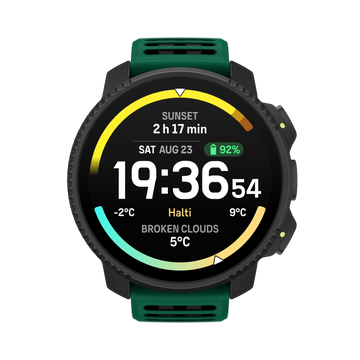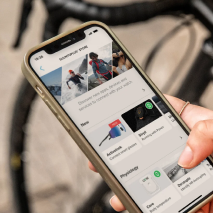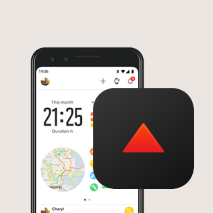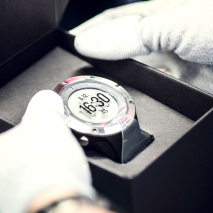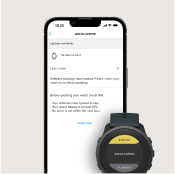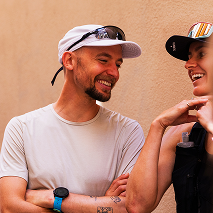

Suunto Blog

8 quick reads to inspire a winter of training and adventure
It’s easy to make excuses why to slack off from training and stop heading out on adventures over the cold season. Those excuses can sound so rational, but deep down, in your heart of hearts you know, we all know, they are total BS.
Winter presents challenges, yes. But also opportunities. You just need the right gear, the right intention and attitude. So before you slip into hibernation mode, scroll through these quick reads and ingest the motivation that lies within. You’ll find tips from elite athletes, coaches, a meteorologist and cloud watcher, a British adventurer who has a perverse passion for going on adventures in the filthiest weather, and much more.
3 ways to motivate yourself to train this winter
The fact you are reading this article is already a sign you are fighting off the urge to hibernate the winter away. TrainingPeaks coach and triathlete Andy Blow outlines three more ways you can keep your motivation high no matter how gray, short and cold the days get.
Photo by Goh Rhy Yan on Unsplash
12 ways to change up your training over winter
Maybe you’ve had a big summer of training and competition and you don’t feel like maintaining the same regimen over winter. That’s perfectly understandable. But rather than slack off, find ways to mix it up instead. These 12 ideas will ensure when spring rolls round you’ll be pumped for your next big training block.
How to stay warm this winter
Knowing how to layer well and what to wear and when are essential skills for outdoor adventure during winter. This article boils it down to the essential things you can do to stay warm when it’s frosty out there.
7 tips for running in the dark
Shorter, darker days means most of us who enjoy running outdoors have to head out once the sun has set. Running in low light presents opportunities and also challenges. Click through for tips on how to do it well.
8 tools for tracking the weather with Suunto
Keep abreast of the latest weather developments with these eight tools. That way you will know when your window of opportunity is to get out and enjoy before the weather folds.
6 tips for cross-country skiing with your Suunto
This article offers six simple tips to help you more easily find nice tracks to explore and to train more effectively.
Alexander Koerner/nxtri.com
What you need to know about cold water swimming
Want a massive energy boost this winter? Try cold water swimming. It will rev your engine like nothing else. But to do it well and safely there’s some essential things you have to know and follow. Norseman Xtreme Triathlon’s chief medical and safety officer Jørgen Melau breaks it down.
7 tips for running in the rain
British adventurer Ben James inexplicably seeks out miserable conditions because it allows him to test his mettle. For him, running in the rain is a badge of honor. Who better to ask for tips for running in the rain?
Lead image: © Photo by Vlad Tchompalov on Unsplash

Manage your training with Suunto app’s Training zone
A progressive training load with adequate recovery and ways to follow progress will lead to a successful adventure or race.
Suunto is your daily companion to enhance your performance. The new training toolset in Suunto app’s Training zone is vast. Read on and learn what’s available. We are sure you will find your new favorite dataset to analyze your training and follow your progress.
To ensure you have the latest Suunto app version update your iOS app in App Store and Android app in Google Play.
Four new ways to look at your training
Am I training smartly? Is my training load progressive? Do I have the right intensity mix? What type of impact do my workouts have?
Training load
The training load theme in Suunto app’s Training zone gives you a good overview of this week’s training load compared to a six-week average. You will also see the daily training load split and the split by activity type. All of this will help you understand your overall physiological load and how much more you can – and should – still do this week.
The value of following your physical load weekly with comparisons to your long-term baseline is that you can look at this as a goal for the week. To gain some fitness, you might want to slightly increase the load for the week. To ensure recovery, keep the load level lower than your average.
Training intensity
Are you really doing both easy base training and higher intensity? Or is your training piling up in a single intensity zone, like tempo work in zone 3? The new Training intensity theme in Suunto app will help you understand your training better as you will see both the weekly intensity distribution and the six-week averages.
The workout intensity totals can be viewed as heart rate, pace, running power, and cycling power zones.
You can set your sport-specific training zones in your Suunto watch based on heart rate, pace and power. Suunto is following a five-zone model where your anaerobic threshold is at zone 4 /5 limit. You can find your correct training zones with a lab or a field test. SuuntoPlus Sports apps like the Anaerobic threshold test and the Functional threshold power test will guide you through a field test session.
Learn more about intensity zones.
Training volume
The sports you have done during the week are shown with duration, distance, load, and ascent. Sports are also grouped to give an overview of each type of sport i.e. running includes running, treadmill, and trail running.
Volume is compared with your six-week average.
As you follow your training volume, you can now easily ensure that you meet the numbers for your key sports any given week: It might be that as a trail runner, you want to get 3000 meters of ascent each week, or as a cyclist, ride 200 kilometers weekly. Your six-week average will help you match your personal benchmark.
Training impact
Suunto app’s Training impact is a new tool that helps you understand your training model and the physiological systems you are targeting. This will help you understand if you are doing what you were planning to do – and if you are missing something in your training.
Training impacts are defined as cardio and muscular impacts. Each workout gets assigned an impact such as “Aerobic” or “Speed & Agility”. Cardio impacts are based on workouts intensity, load, and duration. Muscle impacts are based on activity type.
The training model is identified based on your workout intensity distribution such as Polarized (most activities on low and high intensities, less in the middle), Sweet spot (training mainly between aerobic and anaerobic thresholds), and Base training (most workouts are in zones 1&2).
In addition to the current week, you will see the six-week average for your training impact.
As with other training insights, the impacts are illustrated with long-term reference. If your normal training week has two aerobic sessions, one VO2 max session and two strength sessions, and on Friday you are still missing those aerobic sessions, you know what to focus on during the weekend. This will help you check all the boxes.
Training impact is currently available on Suunto app for Android. Coming soon to iOS as well!
Lead image by Roger Salanova
READ MORE
Get feedback from the Suunto coach
Test your fitness with Suunto
Plan your interval workouts with Suunto app
Unlock your interval training and watch your running improve

Get feedback from the Suunto coach
Suunto coach is an integral part of Suunto app’s Training zone: It helps you pay attention to the right data for your progress and well-being.
The role of a coach is to provide guidance, support, and expertise to help athletes achieve their goals. A coach can be crucial for monitoring progress and providing feedback and adjustments as needed to ensure the athlete is training safely and effectively.
A great coach is also a friend and a companion in your journey. A coach motivates you and requires accountability. Overall, a coach helps athletes improve their performance, avoid injury, and reach their full potential. This is also our goal when providing you with Suunto Coach.
Suunto app’s Training zone has an AI-based coach that is an integral part of the service. It looks at hundreds of different parameters after each workout, learns how you train, and builds a normal training pattern that evolves from every workout you do. Based on this, it can give you the key highlights of your training, recovery, and progress. It provides insights and suggestions for the current week, so you can adjust your effort level as you go forward.
The Suunto coach recognizes areas you are missing in your training this week that you normally are focusing on: Are you lacking volume in your swim workout? Do you push yourself too much with high-intensity runs?
The Suunto coach is not trying to push your training in a direction that you are not used to. For example, if you usually do just high-intensity training, the Suunto coach is not going to ask you to focus more on lower-intensity sessions.
Suunto coach doesn’t really know what is your goal or if you want to follow some specific training methodology. But what it does, is alert, highlight, and comment when you are exceeding healthy limits or just lacking some training aspects you are used to. Suunto coach is there to keep you on your selected path. Its recommendations and highlights are easy to digest without you needing to dig deep into the data.
Now, go to the Suunto app and meet your new coach – the coach already knows you based on your training history!
Lead image by @rsalanova
READ MORE
Manage your training with Suunto app's Training zone

Discover dozens of SuuntoPlus sport apps for your Suunto
Find new tools to manage your training, add new features to your favorite activity type and connect new devices to your Suunto.
Automatic sprints, race nutrition, loop counters, marathon estimator and more! SuuntoPlus sport apps are easy to use watch functionalities that enhance your experience with your Suunto watch with use case specific benefits.
To get started, browse the selection below and in Suunto app’s SuuntoPlus Store, select which ones you want to use on your watch and activate them before starting an exercise.
You can use all SuuntoPlus sport apps with Suunto Vertical, Suunto Race and Suunto 9 Peak Pro watches. Most of the SuuntoPlus sport apps are also compatible with Suunto 9 Peak, Suunto 9 Baro, Suunto 9, Suunto 5 Peak and Suunto 3 watches.
Read on and find your new favorite sport app!
Learn how to get started with SuuntoPlus sport apps
Training & Physiology
HR zones
This sport app shows you the cumulative time on each zone during the workout.
Fused zones
Fused Zones shows which intensity zone you are currently in, looking at different intensity metrics and based on that evaluating the best matching as a result.
Peak Pace
Peak pace gives you real time statistics of your peak efforts on your run.
Peak Power
Peak power gives you real time statistics of your peak efforts.
Movement
This sport app measures your movement with wrist acceleration. This gives new type of insights in sports which involve rapid movements.
Trainingpeaks (HR)
Helps to understand the workout effort and training stress in real time with Heartrate Training Stress Score (TSS(HR))
Trainingpeaks (cycling power)
Helps to understand your riding effort in real time with Normalized Power (NP), Training Stress Score(TSS) and Intensity Factor (IF).
Trainingpeaks (running pace)
Helps to understand your pacing in real time with Intensity Factor (IF),Running Training Stress Score(TSS(r) ) and Normalized Graded Pace (NGP).
Strava
Get specific about how much work goes into your activities with real-time Relative Effort
Burner
The relation between fat and carbs burned by exercising depends on your intensity.
Training Tools
Manual interval (pace)
The manual interval sport app gives you a simple tool to follow your interval session on the fly.
Manual interval (power)
The manual interval sport app gives you a simple tool to follow your interval session on the fly.
Manual interval (hills)
The manual interval sport app gives you a simple tool to follow your interval session on the fly.
Sprint (running pace)
Track sprints automatically while running or cycling to see the number, distance, and time of each interval during your training session
Sprint (cycling power)
Track sprints automatically while running or cycling to see the number, distance, and time of each interval during your training session.
Loop (speed)
Automatic location-based lap insights help you analyze the stats for each loop.
Loop (pace)
Automatic location-based lap insights help you analyze the stats for each loop.
Loop (power)
Automatic location-based lap insights help you analyze the stats for each loop.
Ghost Runner
Catch the virtual ghost runner to practice your pacing or just for fun.
Fitness Testing
FTP test
Functional Threshold Power (FTP) test is designed to give riders an understanding of the highest average power they can maintain for one hour.
Cooper test
The goal of the cooper test is to run as far as possible in 12 minutes to estimate your VO2Max value.
Anaerobic threshold
The test will approximate the anaerobic threshold for running and estimate the anaerobic threshold pace and heart rate.
Aerobic decoupling
The aerobic decoupling will assess your aerobic fitness by evaluating the decoupling effect during longer workouts.
Bleep test
Bleep test – or Beep test – is the most common fitness test used in the world especially popular in team sports to test your current fitness.
Racing
Race companion
Race companion gives athletes a simple tool to get key information with them to the race.
Race nutrition
With this sport app, athlete can setup the timing for each intake and then follow the plan while flying down the mountains.
UltraRace time
When preparing for a long ultra race, it is motivating to see how this pace equals to the potential race time.
Marathon estimator
Marathon estimator gives you an estimated finish time based on your current pace, duration done and remaining distance.
Half Marathon estimator
Half marathon estimator gives you an estimated finish time based on your current pace, duration done and remaining distance.
RaceTime
This sports app helps you to see how your current pace equals to the potential race time over different race distances.
Backyard ultra
The Backyard Ultra is a running event where runners will run 6.7km each hour. As long as they last.
Sport specific
Shoe tester
The shoe tester app is a protocol on how runners can test the impact of different running shoes with a dedicated testing protocol.
Cadence coach
The cadence coach will show you live cadence and stride length, helps you use the right running technique to avoid injuries.
Running Economy
Running economy is the assessment of a runner’s efficiency by analysing their input (heart rate) and output (running pace with NGP).
SwimRun
The swim run sport app gives you key stats for your swimrun race with automatic transitions from run to swim and back as many times as needed.
Duathlon
Duathlon sport app is designed to automatically switch between run and ride views in hectic race scenarios to give you the right data.
SwimTimer
Swim timer is designed to provide swimmers with a better understanding of their interval sessions showing interval counts, rest time etc.
Gym timer
The gym timer can be used to follow the rest times of a workout.
Tabata
Tabata protocol is used as a high intensity workout such as circuit training, consisting of 20 seconds of hard effort and 10 seconds of rest.
Surfer
This sport app gives you all the key stats for your surf session. How many waves did you surf, time surfed and paddle.
Golf score
Golf score sports app is a handy tool for keeping count of number of strikes during the golf.
Tennis score
Tennis score sports app is a handy tool for keeping the tennis score on your wrist while playing.
Badminton score
Badminton score sports app is a handy tool for keeping the badminton game score on your wrist while playing.
Soccer score
Soccer score sports app is a handy tool for keeping the match statistics on your wrist while playing.
Score counter
Score sports app is a handy tool for keeping the score count while playing games.
Disc golf
A handy tool for keeping score and measuring distances during your disc golf game.
Sail racer
Enables you to synchronize your start time to the official start time of the race to get a countdown on your watch.
Outdoor experience
Emergency Info (I.C.E.)
Store essential contact information, allergies, blood type and other medical details under the “ICE” as a sports app.
Safe
Quick access to your GPS coordinates and other key information of your current location as well as your starting point.
Climb
Keep track of your effort while hiking up a mountain, rock climbing, doing hill repeats in your backyard or running upstairs.
DirectPath
The DirectPath gives you an understanding of the direct path between two points you have just covered and the efficiency on how well you were able to follow this line.
Drink Alert
Use the Drink alert to remind you regularly to rehydrate based on the weather conditions.
LastKm/Last mile Pace
In trail running, the pace can change drastically between uphills and downhills in, the last KM/mile app give you the live rolling kilometer/mile pace to follow.
CO2e
CO2e sport app shows how much CO2 you have saved compared to if you would have driven a car.
Moon
The app provides you with information about the moon phases.
Sun
The app provides you with information about the sunrise, sunset as well as time for dusk and dawn.
Big numbers
Sport app that gives you the data in bigger letters to make it clearly visible.
Variometer
The Variometer SuuntoPlus™ feature is a handy tool to keep track of your vertical speed.
Weather
Keep alert with storm alarms, measure water temperature or notice if your hike is going past the sunset.
Weather forecast
The sports app gives you the forecasted weather you can rely on during your long rides and hikes.
Devices
CORE body temperature
With this sport app you can pair your Suunto with a CORE body temperature sensor - to train smarter & perform better.
ActiveLook
With this sport app you can connect your Suunto to ActiveLook Smart Glasses and see key exercise data right in your field of view.
TrainRed
When using this sport app your TrainRed muscle oxygen (SmO2%) sensor will provide real-time feedback on the oxygenation status of muscles, helping you optimize your training and performance.
Learn how to get started with SuuntoPlus sport apps
10 SuuntoPlus sport apps for runners
Lead image by The Adventure Bakery

23 must-read articles that guide you into Suunto’s world of training
Train
Put in the hard work, understand your training load and the different stimuli you are putting on your body.
Figure out your training zones
Key components to improve your fitness are frequency, duration and intensity. Frequency and duration are easy to understand, but training intensity is a bit more tricky. How hard is hard? And why should I care? Read on to learn about intensity zones and about defining them. Read more
Manage your training with Suunto app’s Training zone
A progressive training load with adequate recovery and ways to follow progress will lead to a successful adventure or race. The new training toolset in Suunto app’s Training zone is vast. Read on and learn what’s available. We are sure you will find your new favorite dataset to analyze your training and follow your progress. Read more
Understand and manage your training load with Suunto
Suunto app’s long-term analysis view tracks your training load and helps you stay in balance – whether that means progress, maintaining your fitness or avoiding over-training. Here are four scenarios to help you understand the graphs. Read more
Training with TSS and hrTSS
What are TSS and hrTSS and how can these training metrics help? Read more
View TSS and other power-based cycling metrics in real-time
Normalized Power, Intensity Factor and Training Stress Score are key metrics for all cyclists who use power meters in their training. You can view these metrics in real-time on Suunto Vertical, Suunto Race, Suunto 9 and Suunto 5 watches. Read more
Know your power source: the body’s three energy systems
Understanding how your energy is produced can aid training and improve your quality of life. Suunto partner PerfectPace explains your main power sources. Read more
Unlock your interval training and watch your running improve
Follow Golden Trail World Series champion, Trail Running World Champion and running coach Stian Angermund’s advice and do interval training right to get results. Read more
3 interval sessions for trail runners
Trail running world champion Stian Angermund explains three interval training drills to help you increase your speed and power. Read more
Plan your interval workouts with Suunto app
Build a workout in Suunto app and let your watch guide you through your session! Read more
8 Essential running form drills
Improve your running technique with these essential running form drills – and follow them as a SuuntoPlus Guide on your watch! Read more
Intro to distance running technique
In this article we dig deep into the details of running technique with six key areas for you to focus on. Read on to learn more! Read more
Improve your running with high-intensity hill repeats
Hill repeats build your strength and improve your speed and coordination. This article presented by TrainingPeaks coach Steven Brandes highlights the importance of high-intensity hill repeats and how to do them successfully. Read more
Boost your hill training with SuuntoPlus Climb
Hill repeats are an essential part of an outdoor athlete’s workout repertoire. To make the hard work pay off, pacing is key. The new Climb SuuntoPlus™ feature does just that: it gives you real-time insights into your effort and motivates you to keep going. Read more
Using the Track to Learn How to Properly Pace Your Run
Using the track is a great way to improve your ability to pace yourself correctly. In this article presented by TrainingPeaks coach Todd Parker introduces a workout that helps you get in touch with the right pace for you. Read more
5 reasons why endurance athletes should do high-intensity strength training
Boost your vertical speed and avoid injury by lifting heavy weights.
To improve vertical speed and endurance, high-intensity resistance training should be an essential component of your training plan, says sports scientist, coach and athlete Susi Kraft. Read more
12 high-intensity strength training exercises for endurance athletes
Follow our training video and SuuntoPlus Guide to get stronger. In this article, sports scientist, coach and ski mountaineer Susi Kraft explains and demonstrates how to perform 12 strength-building exercises correctly and safely. Read more
Is the ultimate cross-training… breathing?
Sports coaches worldwide talk about 'good fundamentals’ – you’ve got to own the basics before you can even begin to achieve mastery in a discipline. But former pro freediver Mike Maric takes that deeper than most, by addressing one of the most basic functions of life: breathing. The medically educated forensic scientist from Italy has taken what he’s learned from free diving and applied it to a multitude of other sports – with stunning success. Read more
Control your core body temperature and get better performance results
Your core body temperature can massively impact your performance. That’s why athletes pour water over themselves during races. They’re trying to cool down because they know once their core body temperature reaches a certain level, they’ll lose power and their performance will deteriorate. Like heart rate and power, core body temperature is a crucial metric for elite and recreational athletes alike. Read more
Recover
There’s no one without the other: put in the hard work and rest to rise to the next level.
Four ways to follow your recovery with Suunto
Am I able to recover from my workouts? Is my mental recovery at the same level as physical? Do I ensure recovery with a good amount of sleep? Read on to learn how Suunto can help you in your recovery! Read more
How to use HRV to optimize your recovery
Heart rate variability (HRV) is a helpful metric for endurance athletes. Read on to learn why there’s a buzz around it and how to use Suunto to track heart rate variability. Read more
Learn how sleep can make you a better runner
Sleeping well should come naturally, right? Yet many of us feel tired most of the week. A sleep doctor gives six tips to help you improve your running and overall quality of life. Read more
4 tips to recover well for your best performance
One often ignored component to keep your training steady is ensuring you are getting enough recovery time. It can seem like taking a break from running will disrupt your momentum, but oftentimes it does the exact opposite – it freshens you up and reinvigorates you. Read more
Progress
Is your fitness having an upward trend? Understanding your progress is both motivating and helps you understand if your training has a positive impact.
How to follow your progress with Suunto
The essence of training is to improve physical performance. But how do you know if you are progressing? In this article, you will learn how Suunto can help you. Read more
Test your fitness with Suunto
Here are five SuuntoPlus sports apps that will help you find the right intensity zones for your training and track your progress. Read more

How to follow your progress with Suunto
Endurance training is a long-term endeavor, and progress may not always be linear or immediately noticeable.It requires patience, persistence, and a focus on gradual improvements over time. Tracking progress over longer periods and considering trends rather than short-term fluctuations is essential.
Athletes may have varying interpretations of their progress, and subjective feelings of fatigue, effort, and perceived improvements may not always align with objective measurements.
Athletes may experience periods of plateau where progress seems to stagnate despite consistent training efforts. This can occur due to the body's adaptation to training stimuli, requiring adjustments in training variables such as intensity, volume, and variety to continue progressing. Each athlete responds uniquely to training stimuli. Some individuals may experience rapid progress, while others may require longer periods to see noticeable improvements.
Factors such as genetics, age, training history, and recovery capacity contribute to this individual variability in progress. Endurance training progress can be affected by various external factors, including work, personal life, and environmental stressors.
Four ways to measure your progress
Without objective metrics and measurements, tracking your progress in endurance training can be challenging. It is important to incorporate tools and methods to obtain quantifiable data for evaluating progress accurately.
Here are four Suunto tools that help you objectively measure your progress.
Chronic Training Load (CTL)
Chronic Training Load serves as an indicator of an athlete's fitness level, representing the accumulated training load sustained over an extended duration. You will find your CTL graph in the Suunto app Training Zone’s Progress section. Each activity adds load to the overall and impacts the chronic load. (To get reliable data, make sure your individual intensity zones are set correctly in your Suunto. Learn more here.)
A consistent engagement in high-intensity or high-volume training leads to an increase in CTL, signifying an improvement in fitness. Conversely, reducing the training load or taking breaks from training results in a decrease in CTL, indicating a decline in fitness. It is important to note that CTL is not a direct measure of fitness.
The CTL is indicating the long-term training load, which has a high correlation with fitness gains.
Chronic Training Load Ramp Rate
The Chronic Training Load Ramp Rate measures the rate at which CTL increases over time. A higher ramp rate suggests rapid fitness gains due to an increasing training volume or intensity. You can find your current CTL ramp rate in the Suunto app Trainig Zone’s overview section as well as on your Suunto Race watch as a mini widget.
However, a high ramp rate also raises the risk of overtraining or burnout if not properly managed. The ramp rate is a good tool to follow when preparing for a race or an event, while gradually increasing weekly training volume and intensity.
Determining the ideal ramp rates for Chronic Training Load (CTL) can vary depending on several factors, including an individual's training history, fitness level, goals, and ability to recover. It is important to note that ramp rates should be personalized and gradually increased to avoid excessive stress and potential overtraining.
For beginners or athletes returning from a break or an injury, it is advisable to start with conservative ramp rates. Aim for a weekly increase in CTL between 2–5 units to allow the body to adapt gradually without overwhelming stress.
Athletes with moderate training experience and consistent training can aim for slightly higher ramp rates. A weekly increase of 5 units in CTL or 15–20 in a 6-week period may be appropriate to promote progressive adaptation and performance improvements while still allowing for adequate recovery.
Experienced and highly trained athletes may tolerate higher ramp rates due to their well-developed aerobic capacity and training background.
Remember, gradual and sustainable progress is key in training. It is generally safer to err on the side of caution and slightly underestimate ramp rates rather than risk excessive stress and potential setbacks. Regular monitoring, proper recovery, and paying attention to signs of overtraining are crucial to ensure a healthy and successful training progression.
Progress Follow-up with Testing
Fitness tests are employed to measure and evaluate an individual's physical abilities and characteristics. These tests assess overall physical fitness while identifying specific strengths and weaknesses.
Suunto offers various SuuntoPlus sport apps for testing purposes, such as the Functional Threshold Power Test, Anaerobic Running Test, Cooper Test, and the Beep Test. These assessments aid in monitoring progress and informing training adjustments based on objective performance metrics. (Learn more about testing your fitness with SuuntoPlus sport apps.)
Compare Similar Efforts
Comparing similar workouts allows for the evaluation of performance changes and an understanding of current fitness levels. By performing workouts of comparable duration and intensity every week, athletes can track changes in heart rate, pace, and power.
For instance, maintaining a steady heart rate during weekly long runs while observing a progressive increase in pace signifies improved aerobic fitness. Similarly, comparing the performance in threshold tempo runs or easy morning runs provides insights into an individual's anaerobic and aerobic conditioning, respectively. It is essential to consider heart rate and pace data alongside subjective fatigue sensations and overall workout and race performance.
You can use the new summary tool in Suunto app’s Training Zone to compare efforts. For example, if you have been doing weekly long runs, it is easy to find these in the summary tool. The you can evaluate if your pace has been getting more efficient with the same intensity/heartrate.
If you want to make it easy to find the workouts you wish to compare, you can also use tags in the Suunto app. Add a specific tag to your test workouts and you can easily find them all using the app’s search functionality.
Learn more
Manage your training with Suunto app’s Training zone
Understand and manage your training load with Suunto
How to use HRV to optimize your recovery
Get feedback from the Suunto coach
